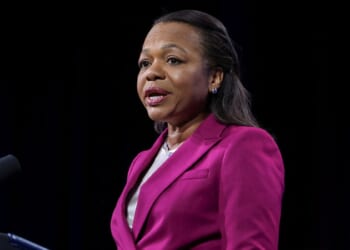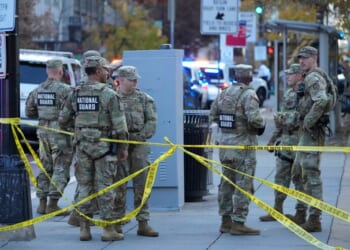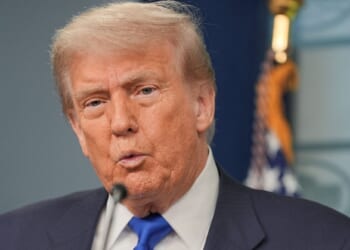
When Donald Trump first ran for President in 2015 and 2016, all the usual people from the failed foreign policy uniparty establishment were up in arms. As NPR reported, “Retired Army Colonel Peter Mansoor once said Donald Trump would be a ‘foreign policy disaster for the United States.’”
Now, almost 10 years later — and nearly as many foreign conflicts resolved in just the first nine months of his second term — it’s safe to say those critics are eating their words.
Earlier this month, on October 8, 2025, Trump announced what has been nearly unthinkable for the last few years: “That Israel and Hamas have both signed off on the first Phase of our Peace Plan.”
He ended his post by quoting Matthew 5:9, “Blessed are the peacemakers,” (in all caps, of course, per his Trumpian style).
Following this historic deal and the mutual release of remaining hostages, the State Department posted an updated graphic highlighting that President Trump has ended no less than eight wars in a mere eight months.
And these weren’t just border skirmishes, either. Some of these conflicts were long-running disputes that had killed thousands and drained economies for years or decades.
Trump’s foreign policy runs on the principle of peace through strength. Build up the military, project power, then deal from there. It keeps American boots off foreign soil. No new wars started on his watch so far.
Contrast that with the neoconservative Republicans and globalist Democrats who came before — the Bush and Obama crowd and their echoes. They preached democracy at gunpoint: Iraq in 2003, toppling Saddam Hussein on shaky intel, leading to 4,500 U.S. dead, $2 trillion spent, and ISIS rising from the ashes. Afghanistan dragged on for 20 years, resulting in another $2 trillion spent and 2,400 Americans killed, only to end shamefully with the Taliban’s recapture of Kabul and control of the country. Or consider Libya. Under their influence in 2011, Gaddafi was ousted and chaos followed, marked, horrifically enough, by the presence of slave markets in the streets.
Those interventions bred endless enemies and refugee waves crashing Europe’s shores. Trump rejected that approach. He arms allies, squeezes foes economically, and brokers pacts that stick.
Trump’s team at the Departments of State, War, and Treasury and his national security advisors use targeted pressure — sanctions, intel, direct calls, and concrete incentives like trade access — to bring recalcitrant nations to the table and facilitate peace.
No vague diplomacy or troop surges. The result? Zero U.S. combat deaths abroad this year. Dollars stay home, building walls and factories, not bases in deserts. Conservatives who still chase neoconservative ghosts miss the point — America First means peace that doesn’t cost blood.
Blessed are the peacemakers, indeed. Let’s run through the list.
Cambodia and Thailand: When skirmishes erupted along the Cambodia-Thailand border last summer, few imagined the violence would stop in days. Yet, according to the Trump administration, that’s precisely what happened. After a series of urgent calls to both prime ministers, Trump warned that the U.S. would suspend trade privileges if the fighting continued. Within 48 hours, a ceasefire was announced. Trump celebrated it as proof of his “peace through trade” doctrine: no foreign aid, no troop deployments — just leverage. “We saved thousands of lives,” he declared. By using America’s economic weight rather than its military muscle, he turned an old border feud into one of the fastest-resolved conflicts of the decade.
Kosovo and Serbia: In the heart of the Balkans, where tension between Serbia and Kosovo has festered since the 1990s, the Trump administration took a different path. Reviving earlier economic agreements, Trump’s team pushed both governments to focus on commerce, infrastructure, and energy integration rather than political grievances. The White House hailed the initiative as a peace achieved “through prosperity.” Trump himself said that he stopped a looming conflict “because of trade.” The result: calmer borders, renewed investment, and a signal that U.S. engagement could turn Europe’s old flashpoints into zones of opportunity.
The DRC and Rwanda: Few conflicts have been as devastating as the decades-long struggle between the Democratic Republic of the Congo and Rwanda, driven by rebel militias and mineral wealth. In June 2025, both governments signed a Washington-brokered accord committing to disarmament, troop withdrawal, and a shared economic corridor. Trump called it “one of the worst wars anyone’s ever seen — and now it’s over.” U.S. mediators linked security pledges to trade incentives, promising investment in regional mining and infrastructure. For the administration, it was the embodiment of Trump’s belief that prosperity can extinguish violence.
Pakistan and India: When fighting flared between nuclear-armed rivals India and Pakistan in May 2025, global alarm bells rang. Trump stepped in personally, phoning both leaders and warning that U.S. trade relationships would end if the conflict continued. Soon after, the two countries reaffirmed a ceasefire. “We stopped a nuclear conflict,” Trump said. “Millions of people could have been killed.” The episode became a centerpiece of his foreign-policy narrative: American economic influence, properly wielded, can halt wars even where nuclear deterrence cannot.
Israel and Iran: After 12 tense days of strikes and counterstrikes between Israel and Iran, President Trump authorized limited U.S. action to neutralize Iranian nuclear facilities, then immediately moved to broker a ceasefire through regional allies. “Both Israel and Iran wanted to stop the war, equally,” he said. “It was my great honor to destroy all nuclear facilities — and then stop the war.” The White House called it a triumph of “peace through strength,” the doctrine that guided Trump’s approach: act decisively, then negotiate from a position of power.
Egypt and Ethiopia: The dispute over the Grand Ethiopian Renaissance Dam threatened to pit two of Africa’s great powers — Egypt and Ethiopia — against each other in war. Trump’s team leaned on quiet diplomacy, using aid, investment, and trade access as incentives for restraint. As tensions cooled, the administration credited its mediation for keeping the peace. In Trump’s telling, this was another victory for America’s “tough love diplomacy,” where the carrot of economic cooperation replaces the stick of military escalation.
Armenia and Azerbaijan: For more than three decades, Armenia and Azerbaijan fought bitterly over Nagorno-Karabakh. In August 2025, under U.S. mediation, the two nations signed a joint declaration at the White House — the first comprehensive peace agreement between them since the Soviet collapse. “Many tried to find a resolution… and they were unsuccessful. With this Accord, we’ve finally succeeded in making peace,” Trump announced. The deal opened trade routes, restored diplomatic relations, and tied both economies to American investment. The administration called it “the end of a 35-year war” and one of Trump’s proudest achievements.
Israel and Hamas: The final entry in Trump’s peace ledger came with the October 2025 truce between Israel and Hamas. After months of rocket fire and hostilities, U.S. mediation produced a cease-fire and a large hostage-prisoner exchange. Standing before the Israeli Knesset, Trump proclaimed, “The skies are calm, the guns are silent, and the sun rises on a holy land that is finally at peace.” For his supporters, it was a fitting conclusion — the eighth “war ended” in eight months, sealing the image of Trump as a president who turned global chaos into calm.
Peace through power
Eight months. Eight wars. One president. In less than a year, Donald J. Trump achieved what generations of American leaders before him could not. The last one to resolve is the Russian-Ukraine war. If Trump can bring an end to that, he will go down as the most transformative foreign policy president in modern American history.
Whether through tariffs or trade, airstrikes or arm-twisting, Trump governed by a simple credo — peace is made by the strong. His critics may question the permanence of these accords, but even they cannot deny the symbolism; for one extraordinary year, the world seemed quieter, and the man in the Oval Office claimed to have delivered what no one else could: peace.
And may God bless him, and America, for it.
Originally published at the Standing for Freedom Center.
William Wolfe is a visiting fellow with the Center for Renewing America. He served as a senior official in the Trump administration, both as a deputy assistant secretary of defense at the Pentagon and a director of legislative affairs at the State Department. Prior to his service in the administration, Wolfe worked for Heritage Action for America, and as a congressional staffer for three different members of Congress, including the former Rep. Dave Brat. He has a B.A. in history from Covenant College, and is finishing his Masters of Divinity at The Southern Baptist Theological Seminary.
Follow William on Twitter at @William_E_Wolfe
















